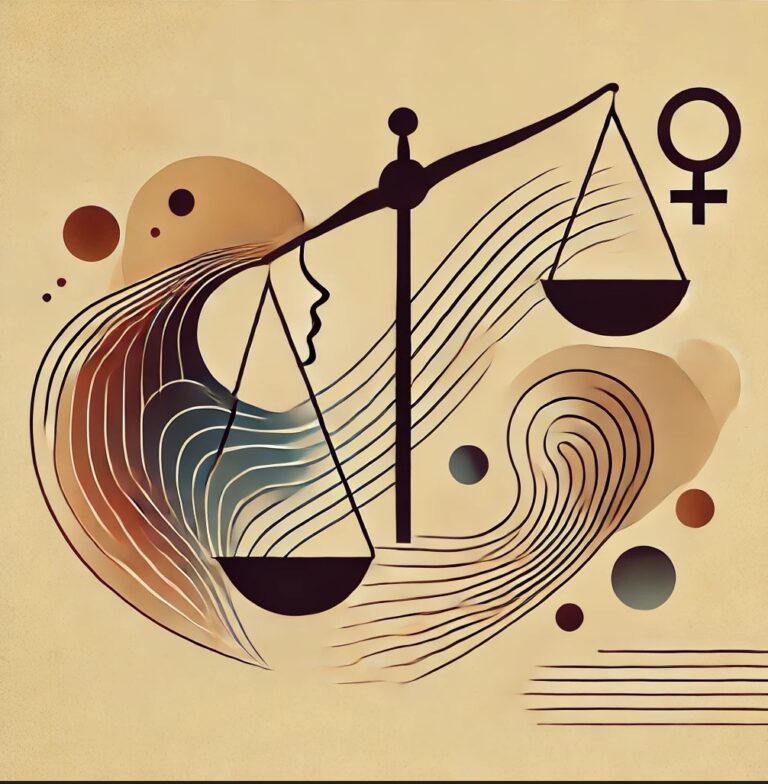The Transition – How Patriarchy Replaced Matriarchy

Blog Series: Matriarchy to Patriarchy: The Gendered Roots of Power & Poverty
In this second part of our blog entitled “The Transition – How Patriarchy Replaced Matriarchy”, Isabela and S.I.T. explore the transition from matriarchy to patriarchy and its lasting effects on gender roles.
History is not just a record of past events—it is the foundation of our present reality. How did we move from societies where women had power and influence to a world where gender disparities continue to shape our opportunities? Understanding this transition is crucial to breaking the cycles of inequality that persist today.
History is not just a sequence of events—it is a story of power, survival and transformation. The shift from matriarchal to patriarchal societies was not an overnight change but a gradual evolution influenced by economic, environmental, military and religious factors. These shifts fundamentally altered societal structures, shaping gender roles that persist to this day.
Understanding this transition is key to identifying the root causes of gender inequality and how historical power structures still influence modern gender roles, leadership opportunities and economic disparities.
What Were Matriarchal Societies Like?
Matriarchy refers to an early period in world history (7000–3500 BCE) when lineage and social organization were determined through maternal descent.
Over time, matriarchy evolved in two distinct phases:
- Early Matriarchy (Late Paleolithic and Early Neolithic) – characterised by full equality between women and men.
- Developed Matriarchy (Developed Neolithic) – where women assumed a dominant role due to their increasing contributions to social and economic life.
The term “Neolithic” derives from the Greek words “neos” (new) and “lithos” (stone). It was introduced in 1865 by Sir John Lubbock, who divided the Stone Age into three periods.
There are two contrasting interpretations of matriarchy:
- The conventional definition, which sees matriarchy as a social system where women dominated men.
- A feminist perspective, arguing that a mirror-image matriarchy, akin to oppressive patriarchy, never existed. Instead, early European societies operated under a normative matriarchal structure characterized by harmony, relational unity and mutual cooperation.
Although feminist explanations—often ideologically driven—offer various theories about how patriarchy replaced matriarchy in ancient Europe and the Near East, no definitive answer exists regarding the disappearance of matriarchy.
However, archaeological evidence suggests that societies functioned more harmoniously, before existential resource depletion led to conflicts between different groups. Socially motivated military expeditions and the search for new food sources appear to have facilitated the rise of patriarchy, ultimately leading to the subjugation of women (Gimbutas, 1982).
The depletion of essential resources was driven by two key factors:
- Severe climate changes: which altered ecosystems and food availability.
- The emergence of migratory tribes: who competed for resources and engaged in territorial conquests.
The Role of Early Agriculture
Early Neolithic agriculture was limited to cultivating wild or domesticated plants such as einkorn wheat, millet and emmer. The first domesticated animals included dogs, sheep, and goats, followed later by pigs and cattle between 6900–6400 BCE. This period saw the establishment of permanent or seasonal settlements.
- In Japan and East Asian cultures, the production of ceramic objects predates agricultural development.
- In the Middle East, Neolithic cultures emerged by the 10th millennium BCE, particularly in southeastern Anatolia and northern Mesopotamia (circa 8000 BCE).
- In pre-Neolithic Natufian cultures, wild cereals were harvested and selected seeds were replanted, leading to the first instances of grain cultivation.
How Settlements Evolved
Settlements became permanent, featuring single-room circular houses made of mud bricks. These homes were surrounded by protective fences to prevent flooding and safeguard livestock. Archaeological findings suggest that grains and meat were stored inside these homes.
Theories on the Agricultural Revolution
Several theories attempt to explain the origins of agriculture:
- The Oasis Theory (Raphael Pumpelly, 1908; V. Gordon Childe): Suggests that drought and food shortages drove early human communities to cluster around oases, encouraging domestication of animals and plant cultivatio. However, this theory is widely disputed, as many archaeologists argue that the climate was actually wetter rather than drier at the time.
- The Narrow Corridor Hypothesis (Robert Braidwood, 1948): Proposes that agriculture began in the narrow mountainous regions of Taurus and Zagros, where conditions were ideal for plant cultivation.
- The Feasting Model (Brian Hayden): Argues that elite tribal leaders triggered agriculture by hosting lavish feasts to accumulate power and influence.
- Demographic Theories (Carl Sauer): Suggest that as populations grew, food production had to expand beyond hunting and gathering.
- The Younger Dryas Theory: Attributes the end of the Ice Age to the extinction of megafauna, forcing humans to seek alternative food sources through agriculture.
The Rise of Patriarchy
As migrating tribes searched for resources, they attacked and conquered settlements, seizing provisions, destroying crops and slaughtering domesticated animals for food. This led to:
- The emergence of fortified settlements.
- Skeletal remains showing weapon-inflicted injuries, evidence of violent conflicts from the Neolithic period.
- The introduction of the plough, which required greater physical strength, reinforcing male dominance in labour.
Over time, women’s roles became increasingly restricted to domestic responsibilities within settlements.
Religious Shifts and the Decline of Matriarchal Beliefs
These socio-economic changes were accompanied by theological shifts, marked by the emergence of male deities:
- Ares (meaning “battle” in Greek) – the Greek god of war.
- Mars – the Roman god of war and protector of agriculture.
- Yahweh – the monotheistic God of the Hebrew tradition.
Patriarchal religions viewed such deities—closely tied to military cultures—as divine protectors of their followers’ territorial conquests. As these religious systems ascended, they gradually restricted the roles of women to better serve patriarchal societal structures.
By contrast, matriarchal religions often venerated fertility goddesses. Among the most common archaeological findings are clay figurines depicting pregnant women, emphasizing fertility. These figurines, often seated or standing, likely represented the Great Mother Goddess—associated with fertility and abundance—or priestesses conducting sacred rituals.
Zoomorphic clay figurines were also widespread, linked to animal worship and ancestral totemic beliefs. The bull, for instance, symbolised strength, fertility and male beginnings, while also serving protective and sacrificial functions within early societies.
Neolithic people worshipped the sun, moon and natural elements that sustained their crops and food supplies. Fertility was elevated to a sacred status and closely tied to female reproductive abilities. Women, seen as bearers of creation, were responsible for agricultural abundance. Priestesses conducted rituals aimed at ensuring the prosperity of families, clans and entire tribes.
The Legacy of Patriarchy
Derived from the Greek patriarkhēs, meaning “rule of the father,” reflecting a system where:
- Men hold disproportionate power over society, economics, politics and religion.
- Inheritance is passed down through the male line.
Sociologist Allan Johnson defines patriarchy as:
“Patriarchy does not refer to any single man or group of men, but rather to a type of society in which both men and women participate… A society is patriarchal to the extent that it promotes male privilege by being male-dominated, male-identified and male-centered. It is also organized around an obsession with control and, as one of its key aspects, involves the oppression of women.”
Conclusion
The transition from matriarchy to patriarchy was shaped by a complex interplay of environmental, social, economic and religious factors. While the precise causes of matriarchy’s decline remain debated, historical and archaeological evidence suggests that resource scarcity, territorial conflicts, technological advancements and religious transformations all contributed to the rise of patriarchal structures—leaving lasting effects on gender roles that persist today.
📢 A Call to Action
Understanding history is just the beginning. To truly break the cycle, we must challenge the norms that stem from this historical shift. How can we reimagine power structures that are fairer and more inclusive? The answers lie in rethinking leadership, rewriting narratives and reclaiming the spaces that once belonged to women.
💬 Join the conversation!
- Do you see historical patterns still influencing gender roles today?
- What steps do you think are necessary to break the cycle of inequality?
📢 Note on References & Research Use
This blog is part of an ongoing research project on the historical evolution of gender dynamics and its impact on power and poverty. Our research is supported by a variety of academic sources, historical studies and expert analyses.
📌 For a full list of references or if you wish to use any of our material, please contact us directly. We are open to collaborations, discussions and further exploration of this topic.
📌 Copyright Notice
“This article is the intellectual property of Isabela and S.I.T. Unauthorised reproduction, distribution, or use of this content without prior permission is strictly prohibited. For collaboration requests or permission to reference our work, please contact us directly.“
